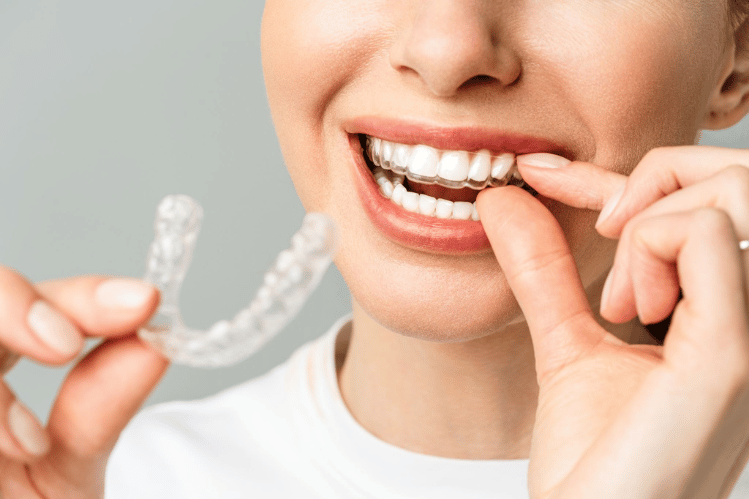The Only Guide to Legacy Orthodontics
Table of ContentsThe 10-Second Trick For Legacy OrthodonticsThe Facts About Legacy Orthodontics UncoveredGet This Report on Legacy OrthodonticsSome Of Legacy OrthodonticsThe Main Principles Of Legacy Orthodontics
At Advanced Orthodontics, we supply patients with a holistic treatment experience. Additionally, we offer flexible treatment routines, flexible payment options and a fun, enjoyable experience. leesburg braces. Call ( 480) 357-4900 today for additional information and timetable a consultation.An orthodontist is a dental expert educated to detect, stop, and treat teeth and jaw irregularities. Orthodontists function with people of all ages, from kids to adults.
Malocclusion, or misaligned teeth, can bring about dental issues, including dental caries, periodontal disease, and tough or unpleasant eating. But not everybody is born with straight teeth. If you have a negative bite or large spaces in between your teeth, you might want to consult a dental professional focusing on orthodontic treatment.
Little Known Questions About Legacy Orthodontics.
( Image Credit: DigitalVision/Getty Images) Orthodontists make use of repaired and removable dental devices, like braces, retainers, and bands, to alter the position of teeth in your mouth. Orthodontic treatment is for dental abnormalities, including: Misaligned teethBite troubles, like an overbite or an underbiteCrowded teeth or teeth that are also far apartJaw misalignmentThe objective of orthodontic treatment is to improve your bite.
While you may think of orthodontists as generally for youngsters or teens that need braces, they can fix dental troubles at any kind of age. Orthodontists attend college, dental college, and orthodontic institution.
All orthodontists are dental professionals, however not all dental experts are orthodontists. Orthodontic residency programs provide extensive, concentrated direction for oral experts. They focus on two areas: How to appropriately and securely relocate teeth Just how to correctly guide growth in the teeth, jaw, and faceOnce an orthodontist has completed training, they have the alternative to come to be board certified.
An Unbiased View of Legacy Orthodontics
Misalignment, or malocclusion, is one of the most usual reason individuals see an orthodontist. It is genetic and is the result of size distinctions in between the top and lower jaw or between the jaw and teeth. Malocclusion leads to tooth overcrowding, a twisted jaw, or irregular bite patterns. Malocclusion is usually treated with: Your orthodontist affixes metal, ceramic, or plastic square bonds to your teeth.
If you have just minor malocclusion, you might have the ability to utilize clear dental braces, called aligners, instead of traditional dental braces (https://my.omsystem.com/members/legacyortho). Some individuals require a headwear to aid move teeth into line with stress from outside the mouth. After braces or aligners, you'll need to put on a retainer. A retainer is a personalized gadget that maintains your teeth in place.
They can create added area in the mouth without having to pull teeth. Orthodontists utilize cables, medical screws, or plates to sustain your jaw bone.
You may need to see an orthodontist if you have: Crowding or otherwise enough area for all of your teethOverbite, when your upper teeth come your bottom teethUnderbite, when your bottom teeth are also much forwardSpacing or concerns with gapsCrossbite, which is when your upper teeth fit behind your base teeth when your mouth is closedOpen bite or a vertical space between your front base and top teethMisplaced midline, when the center of your bottom and top teeth don't line up Remedying a dental malocclusion can: Make biting, eating, and speaking easierImprove the symmetry of our face and your general appearanceEase pain from temporomandibular joint conditionsSeparate your teeth and make them easier to cleanse, helping prevent tooth decay or tooth cavities It's usually a dental professional that first notifications misaligned teeth during a routine exam.
Fascination About Legacy Orthodontics

During your initial orthodontic examination, you'll likely have: An oral examPhotos taken of your face and smileDental X-raysPanoramic (360 degree) X-rays of your face and headImpressions to develop molds of your teethThese tests will help your orthodontist know exactly how to wage your therapy. orthodontist. An orthodontist is a dental practitioner who's had training to treat your teeth and jaw
Orthodontists might execute surgery, exams,X-rays,and more to help you achieve a more comfy, much healthier smile. An orthodontist is concentrated on your bite, so something like a broken tooth would be taken care of by a dentist. Orthodontists are dentists yet not all dental practitioners are orthodontists. Orthodontists are concentrated on your bite, or the means your teeth fit with each other, and the straightness of your teeth.
Ever asked yourself how celebs always seem to have completely lined up teeth? The solution typically depends on the competent hands of an orthodontist. However what exactly does an orthodontist do? Orthodontists are dental professionals that concentrate on remedying abnormalities in the teeth and jaws. Their expertise goes beyond simply producing a lovely smile; it includes improving your overall dental wellness and feature.
The smart Trick of Legacy Orthodontics That Nobody is Discussing

, orthodontists have a varied toolkit at their disposal. These reliable braces utilize a system of braces adhered to the teeth and connected by wires.
Clear aligners, like Invisalign, are a prominent option for clients seeking a much more discreet therapy alternative. These removable trays are custom-made to progressively shift the teeth's setting. Headgear may be made use of along with braces or aligners to apply added targeted forces, particularly for remedying jaw disparities. In cases of narrow jaws, palatal expanders can be used to produce area for appropriate tooth placement.